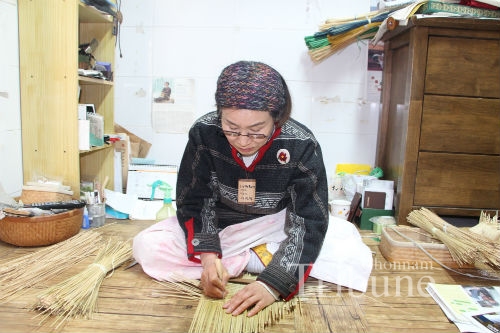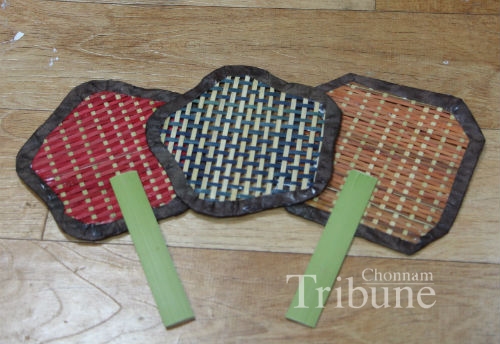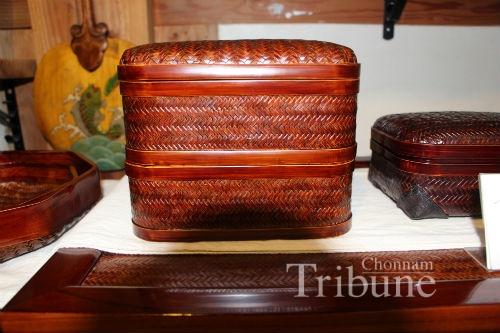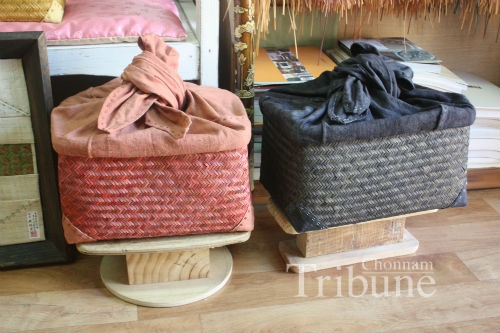The Chonnam Tribune provides infromation about Korean traditional crafts including Chaesang, Nakjuk, Yeomsak, and Onggi from this issue by experiencing craft classes. – Ed.
If you ever feel exhausted of your hectic life and wish you could have a great, unforgettable day in a picturesque place, you can visit Damyang, which is popular for its bamboo trees and handcrafts. Within a half an hour bus ride from Gwangju, the county entices its visitors with its esoteric history, crowd-pleasing noodles, and Chaesangjang, a technique of bamboo weaving. It is important intangible cultural heritage of Korea No.53. The Tribune reporters visited the Cheasangjang Training Center and experienced the bamboo weaving craftwork to share it with CNUians.

What Is Chaesang?
Chaesang was used either for keeping clothes, or as a sewing box, or as a substitute for a jewel box. As “Chae” means color and “Sang” means a box, the literal meaning of the word is a colorful box. When weaving a box, two distinct sets of bamboo strips are interlaced, normally at right angles, to form an object. The longitudinal threads are called the warp and the lateral threads are the weft or filling. The method in which these strips are inter-woven affects the characteristics of the fabric. Every step of the bamboo box making process is handcrafted with delicate care by an artisan of Chaesang known as a Chaesangjang. This makes the price of the Korean bamboo boxes high, which is why it has been considered an ornament for rich people since ancient times. In the Joseon Dynasty period, it was regarded as one of the marriage requirements for a well-bred young woman of Yangban, an aristocrat with much power and money.

How to Make Bamboo Craftwork
We have experienced making a bamboo fan and a bamboo coaster with the son of a Chaesangjang Seo Sin-jeong. He recently began special experience classes for people who have interest in the Korean traditional handicraft work. If you participate in this class, first, you should prepare all the materials namely scissors, glue and bamboo cuts, and then place natural colored bamboo on the floor to a 10 mm degree and start mixing them in different colors. If your bamboo strips are moving while you are breeding, spray some water on them to make them not move. When you finish mixing different colors, put a frame to draw with a pencil and rub some glue on the edge of your drawn shape. Then dry it with a drier till the glue disappears. When the glue is dry, cut it out with scissors and prepare a piece of paper to stick the flour paste and edges together. Your coaster or fan is completed. If you stick a handle on it, you can make a piece of bamboo craftwork.

Valuable Cultural Property
The above-mentioned bamboo craft making seems to be child’s play. However, in reality, it is a tough job. This reporter began deeply appreciating the manual work of people more and felt how far we got from handcraft and beautiful art. Knowing that people do not need this beautiful traditional art anymore was quite disappointing. Some people still want to bequeath bamboo weaving to future generations. Therefore, this reporter would like to finish this article with a short interview with the Chaesangjang who learned the technique from her father and has participated in numerous fairs and exhibitions around the world. Her works range from traditional forms to modern ones.

By Imarova Mokhinur, Tribune Reporter

